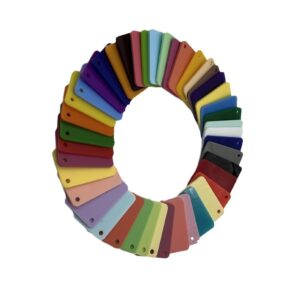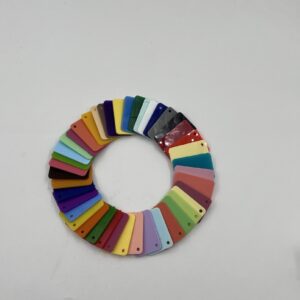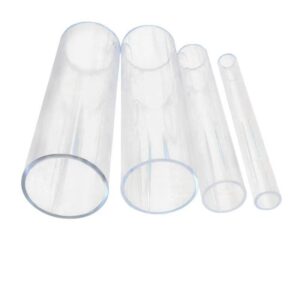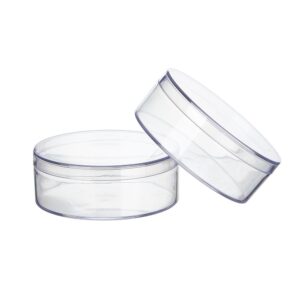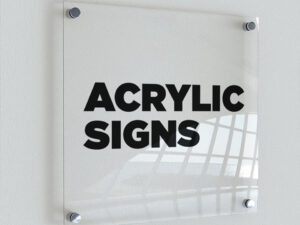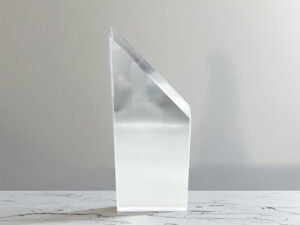Summary
Sculptural acrylic crafts represent a dynamic field within contemporary art and design, characterized by the innovative use of acrylic materials to create a wide range of artistic and functional pieces, from striking lampshades to elaborate accent decor. The medium, known for its clarity, versatility, and ability to manipulate light, has evolved significantly since its inception in the early 20th century, transitioning from industrial applications to a favored choice for artists and designers alike.
Acrylic’s integration into the artistic realm gained momentum in the post-war period, particularly during the 1960s, as artists began to exploit its unique properties for both sculptural and functional designs. Influential figures such as Dan Flavin and Olafur Eliasson have pushed the boundaries of traditional sculpture, exploring themes of light, perception, and space through their use of acrylic materials. Today, sculptural acrylic crafts encompass a variety of techniques, including pouring, sculpting, and modeling, which allow artists to achieve intricate designs and immersive experiences that captivate audiences.
The contemporary landscape of acrylic crafts is marked by significant trends such as advancements in production technology, a focus on sustainability, and a rise in custom, bespoke applications. As artists seek to reduce their environmental footprint, they increasingly employ eco-friendly practices and explore the recycling of acrylic materials, reflecting a broader shift towards sustainable creativity in the arts. Despite challenges associated with mastering the medium, such as achieving seamless finishes and integrating acrylic into larger installations, successful artists continue to innovate, producing works that not only highlight the aesthetic appeal of acrylic but also convey profound narratives and concepts.
Notable contemporary artists, including Robert Irwin and Jeff Zimmerman, exemplify the transformative potential of acrylic in sculptural practices, blending functionality with artistic expression. Their works often transcend traditional boundaries, inviting viewers to engage with the material in novel ways and emphasizing acrylic’s capacity to create captivating visual effects that enhance both public and private spaces. As the field continues to evolve, sculptural acrylic crafts remain at the forefront of artistic exploration, bridging the gap between art, design, and technology in a constantly changing landscape.
Table of Contents
History
The use of acrylic in art and design can be traced back to the early 20th century, when it was originally developed for its clarity and strength. Early applications included aircraft windshields and submarine periscopes, taking advantage of acrylic’s impact resistance and lightness. By the 1930s, the commercial potential of acrylic was recognized, with the polymerization of acrylic acid esters leading to the production of polyacrylate resins, which are now essential in various applications, including paints and plastics sold under trademarks like Plexiglas and Perspex.
In the post-war period, designers began to explore acrylic’s versatility in new ways, embracing its ability to be molded into various forms. This led to its integration into contemporary art, where artists started to utilize acrylic not just for functional objects, but also for creative expressions such as sculptures, lighting fixtures, and geometric designs that play with light and shadow. The medium gained further prominence in the 1960s, a decade marked by the kinetic movement in art, where light was increasingly used as both material and subject in various artistic expressions.
Artists such as Dan Flavin, who pioneered the use of fluorescent lighting in sculpture, contributed significantly to the light art movement, which evolved to include neon and other luminous materials in the 1980s. As artists continued to experiment, acrylic became a favorite medium for creating intricate light-based artworks, thanks to its transparency and malleability, allowing for a broad range of aesthetic possibilities.
The contemporary era has seen acrylic craft taking various forms, from functional lampshades to artistic accent pieces. Artists like Piero Golia have employed acrylic in their works, further pushing the boundaries of reality and engaging viewers through multi-faceted experiences. This evolution highlights the continued relevance and adaptability of acrylic as a material that bridges art, design, and functionality in a constantly changing artistic landscape.

Techniques and Methods
Sculptural acrylic crafts encompass a variety of techniques and methods that artists can employ to create visually stunning pieces, from lampshades to accent decor. These techniques can be categorized into several distinct approaches, each providing unique results and aesthetic qualities.
Pouring Techniques
One of the primary methods in sculptural acrylic art is pouring, which involves the application of acrylic paint in different forms and patterns.
The Drop Technique
This technique involves dropping larger blobs of paint onto the surface and then manipulating them to create a design. Artists may choose to rotate the substrate to achieve their desired outcome, resulting in dynamic patterns that flow organically across the surface.
Start with Stripes
In this method, artists pour paint in stripes on the canvas or object. By rotating the piece, the stripes blend and create a layered effect. Adding glitter during this process can enhance the visual appeal and ensure it adheres properly once dry.
Use Smaller Drops
Similar to the drop technique but on a smaller scale, this approach utilizes smaller drops of paint. Artists often use a combination of colors that are harmonious, occasionally introducing complementary colors to add depth and interest. The careful rotation of the surface helps achieve the desired design.
Pour in Circles
For this technique, paint is poured in circular motions, alternating colors to create a vibrant and layered effect. Glitter or other embellishments can be added for additional texture. Artists may also use tools to create motifs within the paint, contributing to the overall design.
Making a Rainbow
This technique involves dragging a sculpting tool through poured paint to create lines and patterns. Artists start from a single point and can experiment with varying the pressure and angles of the tool to achieve different effects. This method is particularly useful for creating intricate, swirling designs.
Sculpting and Modeling
Beyond pouring techniques, sculpting and modeling with acrylic materials also plays a significant role in creating three-dimensional pieces.
Tools and Materials
Artists utilize a variety of sculpting tools such as modeling and carving tools, which allow for detailed work with clay and acrylic mediums. Essential tools can include acrylic rollers, craft knives, and shape cutters, enabling both beginners and professionals to create intricate designs.
Layering and Glazing
Layering techniques, including glazing with transparent acrylics, allow artists to build depth and complexity within their pieces. By applying multiple layers, the artist can achieve rich colors and textures that contribute to the overall aesthetic.

Applications
Acrylic is widely utilized in bespoke lighting design due to its unique properties, such as versatility and the ability to diffuse light effectively. Custom lighting applications include everything from wall lights to elaborate hanging chandeliers, where acrylic components can be crafted into distinctive shapes and textures to enhance the overall aesthetic of a space. The material can also be integrated with advanced technology to create multimedia installations that combine lighting and sound, adding an interactive element to the design.
Decorative and Functional Art
In addition to lighting, acrylic serves as an excellent medium for creating a variety of decorative and functional art pieces. It can be molded and sculpted into striking designs, making it suitable for artistic expression in sculptures and wall hangings. This adaptability extends to furniture design, where acrylic can be used to create modern and unique pieces such as tables, chairs, and decorative items. The vibrant colors and layers achievable with acrylic enhance its appeal in artistic installations, allowing for personalized and eye-catching designs.
Interactive Exhibits
Acrylic is also favored in the design of interactive exhibits. Its transparency and durability make it ideal for creating sturdy covers that protect mechanical parts while allowing user interaction, thus enhancing the experience of multimedia displays. This capability enables designers to integrate technology seamlessly within exhibits, providing both aesthetic appeal and functional durability.
Custom Projects and Prototyping
For custom projects, acrylic is favored for its capacity to be tailored to specific design needs. Midton, for instance, emphasizes collaboration with clients to develop bespoke solutions through technical drawings and prototypes, ensuring that the final product aligns perfectly with the client’s vision. The use of CAD software and 3D modeling allows for detailed visualization and refinement of concepts before they go into production, thereby maximizing impact and satisfaction for the end user.

Contemporary Trends
Contemporary trends in sculptural acrylic crafts reflect a dynamic intersection of artistic innovation, technological advancements, and sustainable practices. Acrylic materials have gained popularity in various artistic domains, particularly in sculpture and lighting design, as artists explore new methods of production and application.
Advances in Production and Processing
Recent advancements in the production and processing of acrylic materials have significantly improved their properties, such as impact resistance and optical clarity. Techniques such as advanced polymerization have emerged, allowing for the creation of acrylics that meet the demanding needs of contemporary sculptors and designers. This evolution in technology has not only enhanced the material’s performance but has also expanded its potential applications in various artistic and commercial projects.
New Applications in Sculpture
Acrylic’s versatility has led to its adoption in a wide range of sculptural forms, from intricate light installations to minimalist designs. Artists like Dan Flavin, who pioneered the use of fluorescent tubes in sculpture, set a precedent that contemporary creators follow by incorporating acrylic components into their works. These innovations often explore themes of light and space, transforming traditional sculpture into immersive experiences. Additionally, emerging artists such as Adela Andea utilize materials like LED lights and flexible neon tubes, demonstrating the material’s capacity to enhance sensory engagement in sculptural practices.
Focus on Sustainability
As the acrylic industry evolves, there is a growing emphasis on sustainability and environmental responsibility. Researchers and manufacturers are increasingly exploring eco-friendly production methods and the potential for recycling acrylic materials. This shift aligns with broader trends in contemporary art, where artists are becoming more conscious of their environmental footprint and seeking materials that reflect sustainable practices.
Custom Design and Bespoke Applications
The rise of bespoke acrylic lighting and sculptural designs showcases the customization capabilities of acrylic materials. Artisans are leveraging advanced technologies such as 3D modeling and printing to create unique shapes and forms, allowing for personalized artistic expression. This custom approach caters to the specific needs of artists and clients alike, enhancing the aesthetic and functional qualities of sculptural pieces.

Notable Works and Artists
Prominent Artists in Sculptural Acrylic
A range of contemporary artists have embraced acrylic as a medium for creating innovative sculptures and installations, pushing the boundaries of traditional art forms. Notable figures include Robert Irwin, James Turrell, Olafur Eliasson, Larry Bell, and Helen Pashgian, who are key contributors to the Light and Space movement, known for their exploration of light, perception, and spatial dynamics through acrylic materials.
Jeff Zimmerman is another influential artist whose work often blurs the line between sculpture and functional design. His illuminated pieces, characterized by organic forms and intricate designs, create immersive environments that engage viewers and transform spaces. His recent exhibitions have highlighted how lighting can serve both aesthetic and conceptual purposes in contemporary sculpture.
Significant Sculptural Works
The versatility of acrylic has led to the creation of various iconic works. For instance, lampshades designed by Man Ray exemplify how acrylic can be used to combine functionality with artistic expression. His works often merge form and light, producing captivating visual effects that invite further exploration of the material’s properties. Additionally, the use of acrylic in architectural sculptures has gained popularity, with artists creating stunning, large-scale installations that showcase the material’s transparency and durability. These pieces not only serve as art but also as interactive elements within public and private spaces, enhancing the architectural experience.
Challenges and Innovations
Despite its advantages, artists face challenges when working with acrylic, particularly in terms of achieving the desired finish and incorporating it into larger installations. Mastery of techniques such as cutting, joining, and finishing acrylic is essential for producing high-quality pieces that resonate with audiences. However, those who successfully navigate these challenges often produce works that not only highlight acrylic’s aesthetic qualities but also convey deeper narratives and concepts, enriching the viewer’s experience with the art.
Through continuous experimentation and innovation, artists continue to expand the boundaries of sculptural acrylic, creating works that captivate and inspire across various settings and contexts.





